Ficha 4 × 1
Date: 09/12/2012 to 12/12/2012
Saímos of: Guadalajara, Jalisco – Mexico
Total distance: About 275 km
Where to sleep: In tents. In a campground in Guanajuato with the name of Morrill Van Camp.
Filled Tire : The city of Guanajuato is the proper tire filled! Their squares, substances, legends and museums. Besides not being dominated by the 'gringos'.
Final destiny: Guanajuato, Guanajuato – Mexico (we also in San Miguel de Allende)
Travel time: Just over 3 hours (San Miguel de Allende tied é 1 more hour)
What we eat good: Doces de leite, guava, pumpkin, jams, crystallized fruits… candy store on a path to the town of Valencia (that is not the famous La Catrina).
Tire murcho: This difficult! Maybe a little camping option. Actually we just had and which we can hardly stand, because it had been booked for a large group of travelers.
Path: We left the highway Guadalajara Mexico 80, at some point we move toward where we Aguascalientes Mexico roads 45 and, then, Mexico 110 tied to central Guanajuato. Road in good condition.
"The people of the beautiful city does not grow, but she is visited by tourists include the lush splendor of the old days, wandering the alley of romantic names, lendas rich, and with the horrify 100 Mumia the salts of the earth conservaram intact. " (GALEANO, Eduardo - The Open Veins of Latin America. The&PM, 2011 - Translation of 'Open Veins of Latin America ', of 1978)
From the mountains of Valencia, Guanajuato no, bled one of the largest amounts of silver that already had knowledge in human history. Thousands of Indians and mestizos lost their lives in the mines of the region under Spanish exploration, to finance the European industrial development. Also according to the book by Galeano, in the second half of the century 19, Father Lucio Marmolejo compared the hanging gardens of Semiramis, in Babylon, to the city of Guanajuato. Marmolejo destacava, and others, theaters, squares, domes and towers on the slopes of the green hills surrounding the city.
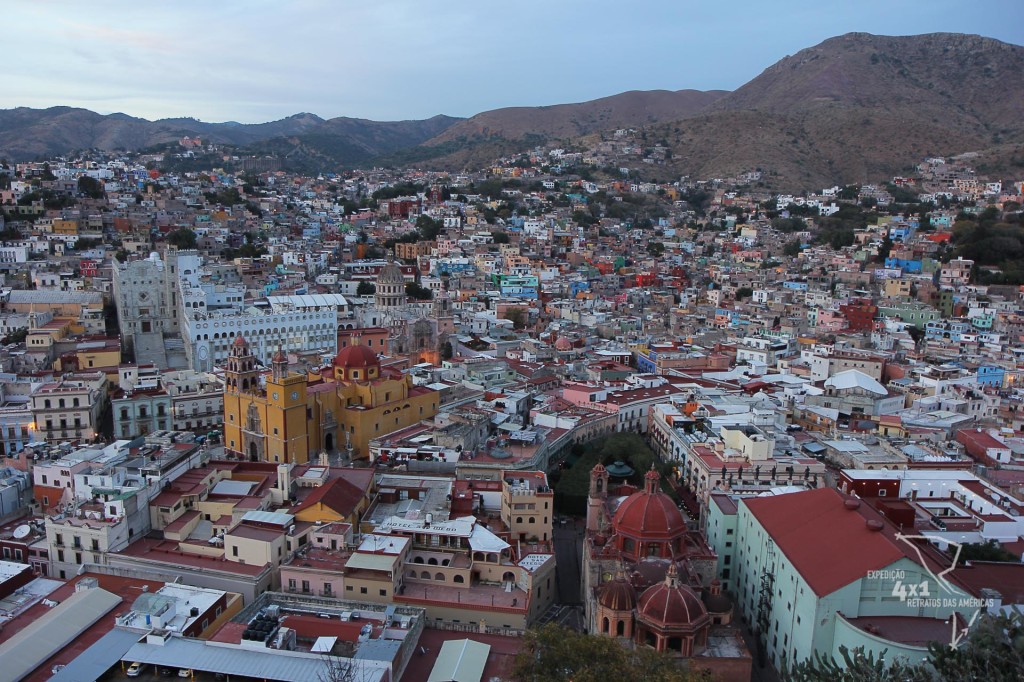
Aerial view of the historic center of Guanajuato, highlighting the Basilica, e or Garden Union (green triangle in the center) – Mexico
Located in a valley, Guanajuato is formed through narrow alleys, many streets without access to cars and long staircases that allow the comings and goings of its citizens through the historic center. Its narrow streets and curves still stone, the absence of large signs or traffic lights and its many plazas and buildings over 2 centuries, help preserve the colonial aspect of what remained of the times "golden age" of the cycle of silver. Moreover, The city also hosted the first uprising that foreshadowed the Mexican War of Independence would have their first battle there next, within the state of Guanajuato. Yes, also, birthplace of one of the most renowned Mexican painters: Diego Rivera - marido of Frida Kahlo. Adding up all the many cultural events that the city hosts annually, to UNESCO, in 1988, conferred upon this little charm inside Mexican, the title of World Heritage.
But, not simply its historical and cultural relevance for Latin America, Guanajuato is also known for its incredible legends. And that's what started our visit…
Early in the morning, followed with Tanajura straight to the historical center. We parked and were soon approached by a number of accredited guides that exist in the city. The curiosity aroused in that short way up there, principally because of long tunnels and the amount of colonial, were not sufficient to think twice about hiring a guide to introduce us to the city. Introductions made initial, walked to the 'Callejón del Beso’ (o beco do beijo).
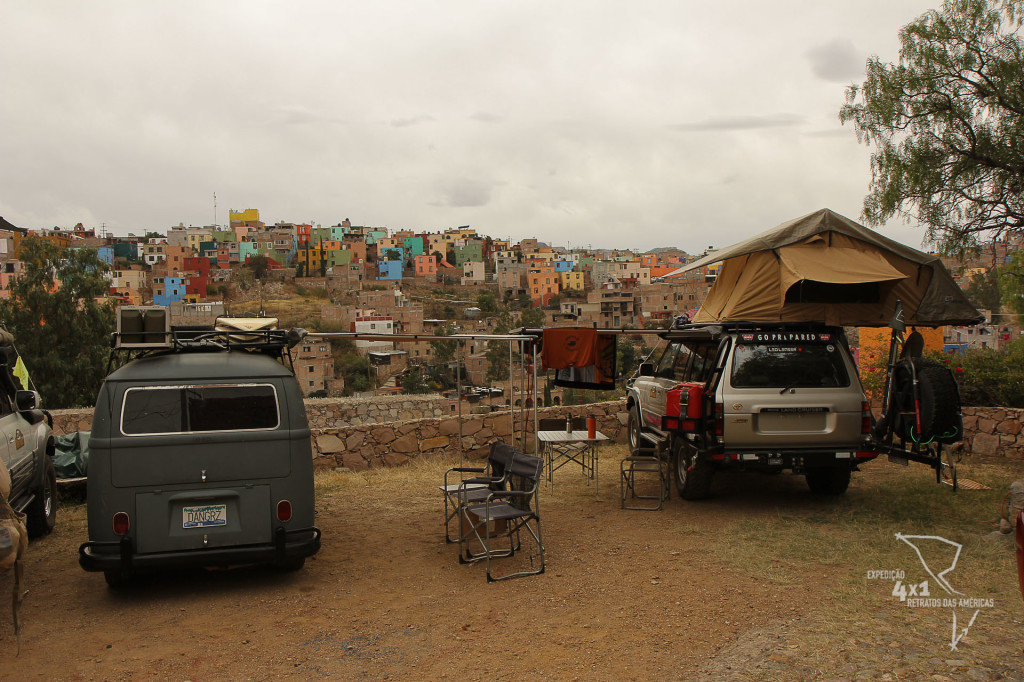
Our camping in Guanajuato. Hosted in conjunction with the U.S. that would start a rally to the Yucatan peninsula.
Legend has it that a miner - worker of mine Valenciana, and not the citizen of the state where he was born Tiradentes ![]() - Named Carlos was passionate Spanish Doña Ana. Of noble family, Ana's father wanted her to marry a rich Spanish and stopped paying attention to poor Carlos. No entanto, the miner did not give up love. He found out who owned the house in front of Ana, in which their balconies almost touching, so close that the alley was (ou beco, which in Spanish means alley). Carlos spent all his salary paying that rent to be able to see it from the balcony and exchanging passionate kisses. On a night, entanto not, The couple was spotted by the father of Anne swore that the girl with death if returned to see them together. But love was both stronger and they ignored the request of the father. The tragedy was consummated when, again, Dad found both together on the balcony. On impulse irrational father wielded a knife in the back of his own daughter while the miner gave her one last kiss goodbye. Nowadays, dozens of couples in love daily follow the tradition of giving a kiss on the third rung of the ladder underneath the balcony where occurred the last kiss of Carlos and Ana. (But we do not follow the tradition…hahaha)
- Named Carlos was passionate Spanish Doña Ana. Of noble family, Ana's father wanted her to marry a rich Spanish and stopped paying attention to poor Carlos. No entanto, the miner did not give up love. He found out who owned the house in front of Ana, in which their balconies almost touching, so close that the alley was (ou beco, which in Spanish means alley). Carlos spent all his salary paying that rent to be able to see it from the balcony and exchanging passionate kisses. On a night, entanto not, The couple was spotted by the father of Anne swore that the girl with death if returned to see them together. But love was both stronger and they ignored the request of the father. The tragedy was consummated when, again, Dad found both together on the balcony. On impulse irrational father wielded a knife in the back of his own daughter while the miner gave her one last kiss goodbye. Nowadays, dozens of couples in love daily follow the tradition of giving a kiss on the third rung of the ladder underneath the balcony where occurred the last kiss of Carlos and Ana. (But we do not follow the tradition…hahaha)
Then, left there enjoying those houses of the eighteenth century in narrow alleys with less than 1.70 m. Around the Plaza de la Paz is to highlight the level of conservation of numerous houses and mansions of the old elite Guanajuatense, bem as ea or Legislative Palace Basilica of Our Lady of Guanajuato, built in Baroque style around 1765. Another impressive building of Guanajuato is the Teatro Juárez, that began in the late 19 and was inaugurated by former president and dictator, Porfírio Diaz, with the opera Aida, de Verdi. O Teatro Juarez, today, receives many events of music and dance.
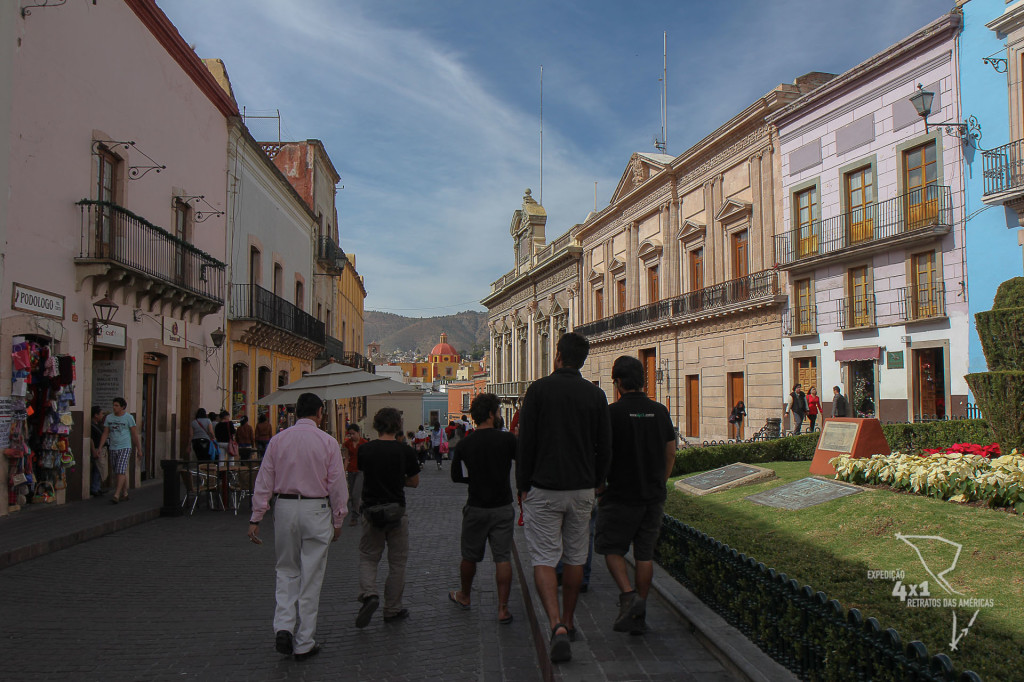
Ao gives redor Peace Square, one can see the beautiful colonial buildings like the Legislative Palace and the house where he lived the Count Rul, Spain.
Also, call much attention in its numerous city squares. Be with bronze statues of poets, several other musicians or artists; either by their colorful flowers and resemblance to the Venetian squares. Fact is that the whole life of Guanajuato is going on around them. The more love, entanto not, é or Garden of the Union. Meeting point of many Guanajuatuenses, the magnificent square contains a bandstand at its center and is surrounded by low trees, all aligned, and with their tops trimmed in the shape of a slice of cheese! It was a Tuesday, on our last day in town, um witness traditional event that happens every week no Garden of Union. A local band, composed of 10 musicians, played a lively Latin music. Couples lords and ladies over 65 years and garments denouncing the disparity of their social classes, danced there, together! The same song, in the same square, without that distanced the economic difference. Applauded and seen by younger, curious couples, locals and tourists that were spread in the square to enjoy the concert, a truly magical night!
Still on the outskirts of the Teatro Juarez there is a kind of hole in the sidewalk surrounded by glass, where it was possible to spot a buried Guanajuato. Underground?! That's it. Because of its steep slopes, the city suffered for many years with the problem of floods. In 1760 and 1780 two massive floods almost wiped out the city completely. Thus, in the middle of the next century, and after another rebuilding the city, began constructing a series of canals and tunnels for underground water volume escoarem. But 1960, the construction of a dam on the main river around the city, managed to turn the problem of floods. Thus, most of those tunnels and canals built underground highways have become few miles up, where cars pass today, bus and give more charm and mysticism to town!
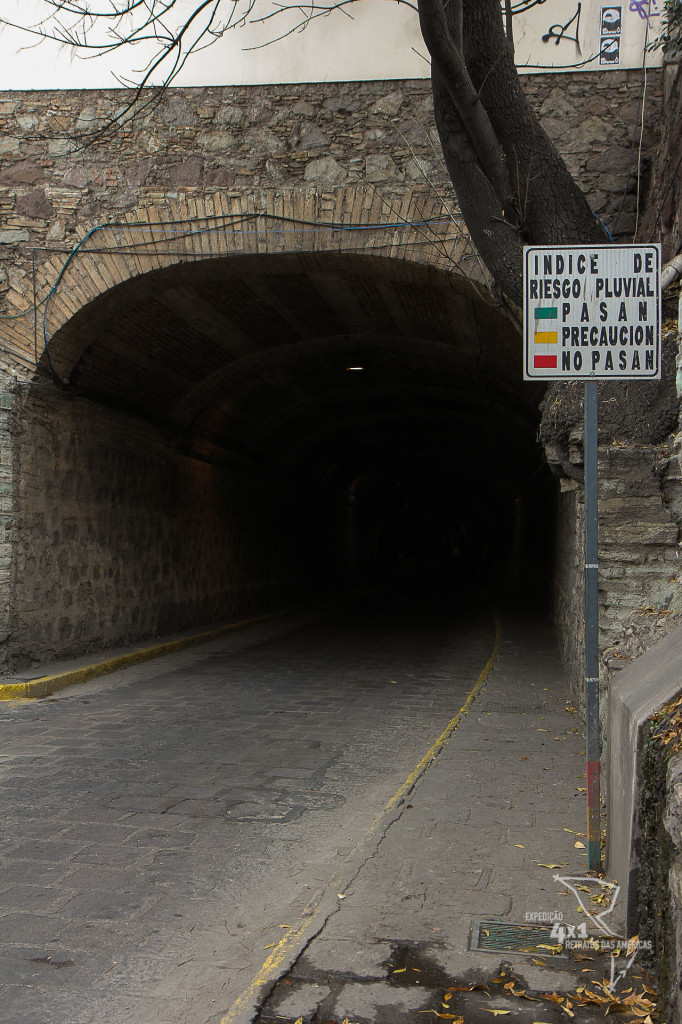
…notice the bottom of the pole markings in the colors corresponding to the level of water can, or not, to go with the car.
Early that afternoon we drove to the town of Valencia, where mines were the main city. But, before… (a tip for those who like sweets and treats! ![]() )…spent a delightful candy store recommended by our guide, something to eat (do not remember the name of the candy store, but was not the La Catrina - very famous in the region, but not enchanted us as much as that other). Returning…Here in Valencia we know the church of San Cayetano (also known as La Valenciana church), which lies at the entrance of a leading silver mines region: The San Cayetano Bocamina. His first extractions occurred 1557 the 1760 and was basically done by Indians. The second stage, between 1761 the 1810, was the era of the silver boom cycle. With the almost complete extermination of the natives of the region by “gentle” Spanish, The work was done primarily by crossbred techniques already a bit more refined. The visit surprised by the depth of the mine and get to know one of the rustic methods of breaking stones using a simple piece of wood.
)…spent a delightful candy store recommended by our guide, something to eat (do not remember the name of the candy store, but was not the La Catrina - very famous in the region, but not enchanted us as much as that other). Returning…Here in Valencia we know the church of San Cayetano (also known as La Valenciana church), which lies at the entrance of a leading silver mines region: The San Cayetano Bocamina. His first extractions occurred 1557 the 1760 and was basically done by Indians. The second stage, between 1761 the 1810, was the era of the silver boom cycle. With the almost complete extermination of the natives of the region by “gentle” Spanish, The work was done primarily by crossbred techniques already a bit more refined. The visit surprised by the depth of the mine and get to know one of the rustic methods of breaking stones using a simple piece of wood.
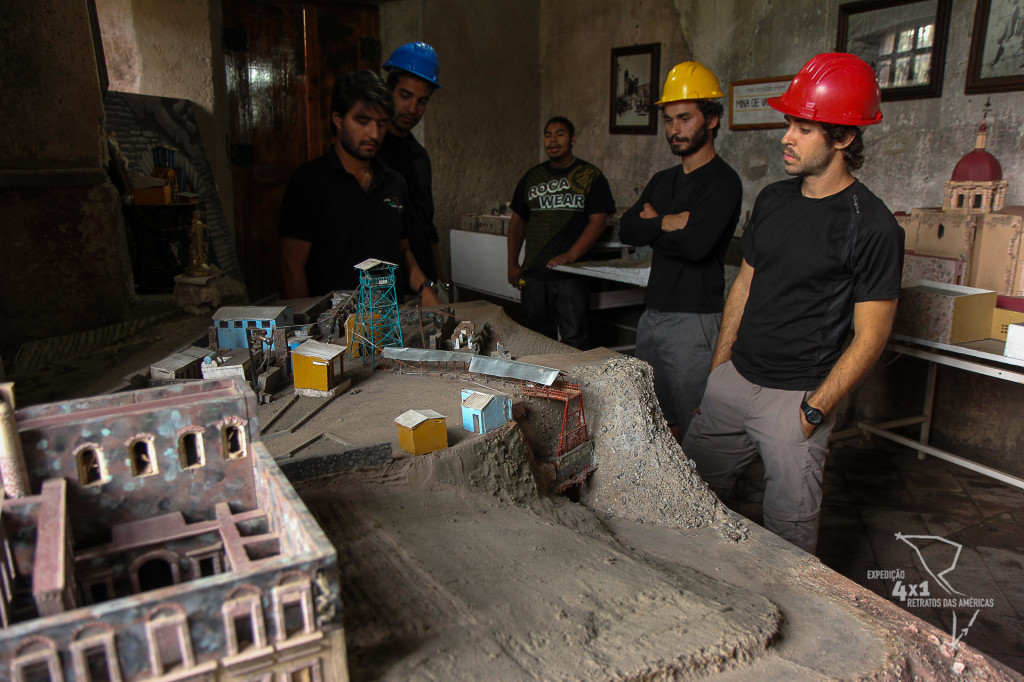
Illustrate the various models that have been opened in mines “eye” the exploitation of the region of Guanajuato silver
Around La Valenciana was also fun Torture Museum. With guides dressed as at the time of the Inquisition, The museum shows the various tools and tricks used to torture those who were opposed to the reign, or fe católica. Despite the environment morbid and heavy, guides can transform the mild climate and relaxed, with jokes and jokes that mock the situation of those who were condemned to there paid their "social debts”.
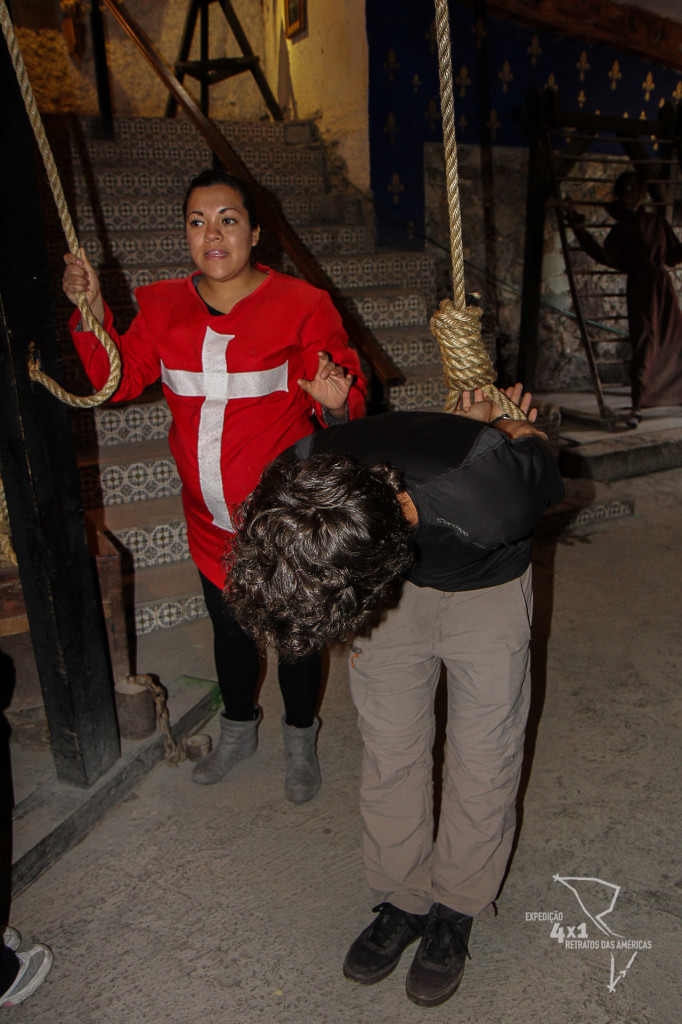
Gabriel was taken to a base in the Museo demonstraçãozinha of Torture! Seized to pay his debts there some minutinhos! hahaha :)
We ran away to get even open one of the main sights of the city. Far from being a legend, the curious Museum of Mummies, is not necessarily the coolest attraction of Guanajuato, but the excellent condition of their mummies buried probably between 1830 and 1950, plus the reason why still uncertain, and as, stayed that way, are really impressing! (a pity we could not take photos inside)
The day was near its end and, to end as it began, we visited the statue in honor of a major city legends: The Pipila!!! The history of Mexican Independence says that, After the cry of Independence made by Father Miguel Hidalgo in 1810, troops as insurgents (led by Father) marched from the town of Dolores, to the state capital: the city of Guanajuato. The intention of the rebels was to challenge the Spanish colonial government. In response, the royal troops and elite of the region into the largest warehouse in the city - Alhóndiga - To protect themselves and, so, began firing on insurgents. Imposing, the building had only one access door which hindered the entry of rebels who were constantly attacked by the Spanish. This episode became known as the first battle of the Mexican Independence! That's where the story the legend of a brave miner: Juan Jose de los Reyes Martinez Amaro, apelidado El Pipila! Supporting a large flat rock in the back as shield, decided to approach up the huge wooden door of the building. Loading hands a torch and tar he fired at the door. This allowed the insurgents to enter the building and take. In his honor, a colossal statue was built on a hill around the city with a beautiful view of Guanajuato. Wool saw the sunset and we take beautiful pictures of the lovely city.
We dedicate the next day to walk around the city with more calm and feel the routine of its inhabitants. Walk through its main streets and walked through the huge market Hidalgo. We visited the very well maintained Diego Rivera museum in the house where the most illustrious Mexican painter lived the first 6 years of his life and enchanted by his work that made us understand the importance of this painter - until that was hailed by none other than Albert Einstein - to the country's history!
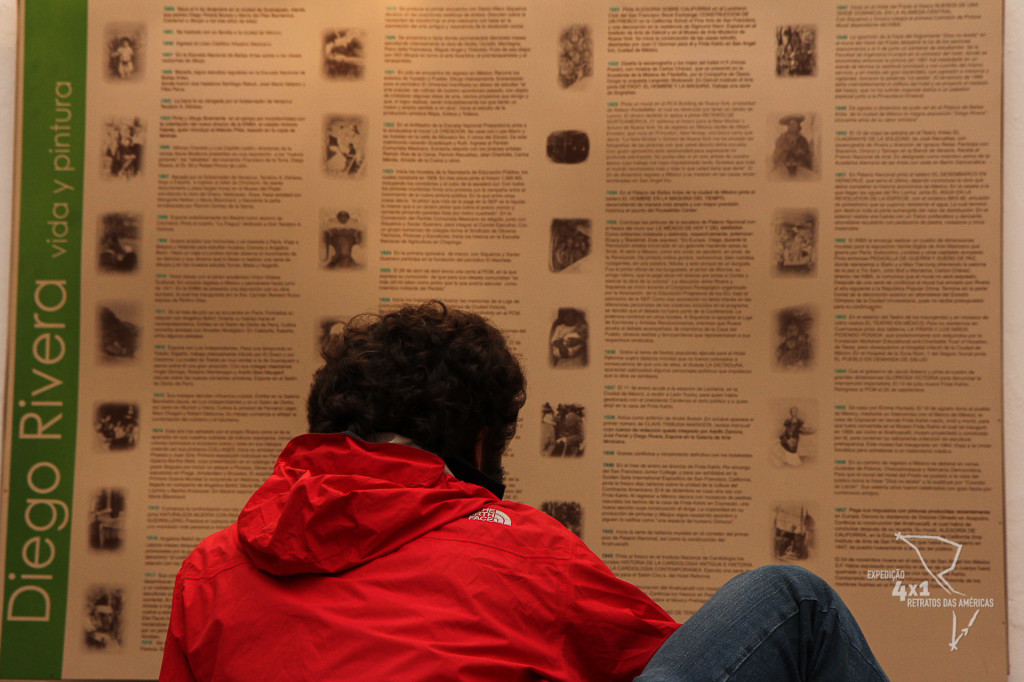
Andrew notes the interesting table reports the main moments of Rivera. Including excerpt of the letter from Einstein to the painter and his passes comings and goings with his beloved: a também artist Frida Kahlo!
But today Guanajuato is impressive not only for the conservation and maintenance of their legends and stories. Trade, services, tourism and operation of important University of Guanajuato, keeps the city alive and active! Counting com 30 thousand Estudantes, the university also enters the "climate" of the historical significance of the city immortalizing an important tradition of Spanish universities. There are more than 5 decades his realizam students every night of the Callejoneadas, departing every day in front of the Teatro Juárez for a walk through downtown. Dresses like the old Spanish university, touching ballads for the young audiences that, accompanied by a glass of wine in his hands, sing and clap the rhythm of singing. And it's the little bar 'Los Lobos' the past meets the present. Bustling, noisy and with a foosball table (ou totó, for alguns) na top part of, the bar touches the famous' rocks’ das decades 60 the 90, como Jimi Hendrix, Pretenders, Beatles, Elvis, The Doors… keeping alive a spirit university, jovem and questionador.

Loin pacata, but in his heart, beats a bohemian city with cultural activities, dining and a few bars for the young university!
October, the city still hosts the Festival Cervantino. Created in 1972 hair students at the University of Guanajuato, The festival began with interpretations of pieces from famous writer Miguel de Cervantes, interpreted by the students themselves. Besides plays, The festival now has opera, mostrás of cinema, art exhibits, conversations and academic conferences, music and dance recital.
It's a lot of culture!!!
Outside the city a huge statue alludes to the miners who were the driving force behind the emergence of Guanajuato. In jest, Our guide said that alongside those miners, should be placed on the monument of a man with a clipboard in one hand, and a map in the other. This man would tour guides, symbol of economic activity that sustains the city today… But legends, mummies, tunnels, painters, students, culture and a huge historical relevance mark the city! And that bunch is, mountains that once overflowed tons of silver from the hands of those men suffered, born also one of the biggest cultural heritages that humanity has recorded.
Now, imagine if it was built a monument for each of those men and women who have marked the history of the region?! And in every corner of our Brazil? Missing Heroes, left or ignorance of our own history?
Guanajuato is undoubtedly one of the most amazing cities already visited!
We left heading south. But before, passed quickly by another historical treasure of the state of Guanajuato: the city of San Miguel de Allende. Unlike “neighboring” Guanajuato, San Miguel tourism attracts more oriented for 'los gringos’ (Americans) and Canadian, well as much of the Mexican elite who travels, mainly, provides capital for. The city has a historical relevance of Guanajuato for next also have been the site of important battles of the Mexican independence, além being generally do terra natal Ignacio de Allende, one of the heroes who fought alongside Mexican priest Miguel Hidalgo. The city has excellent restaurants, a beautiful square and a rich artistic and architectural heritage, due to its School of Fine Arts, today that exposes traditional paintings and murals of Mexican culture!
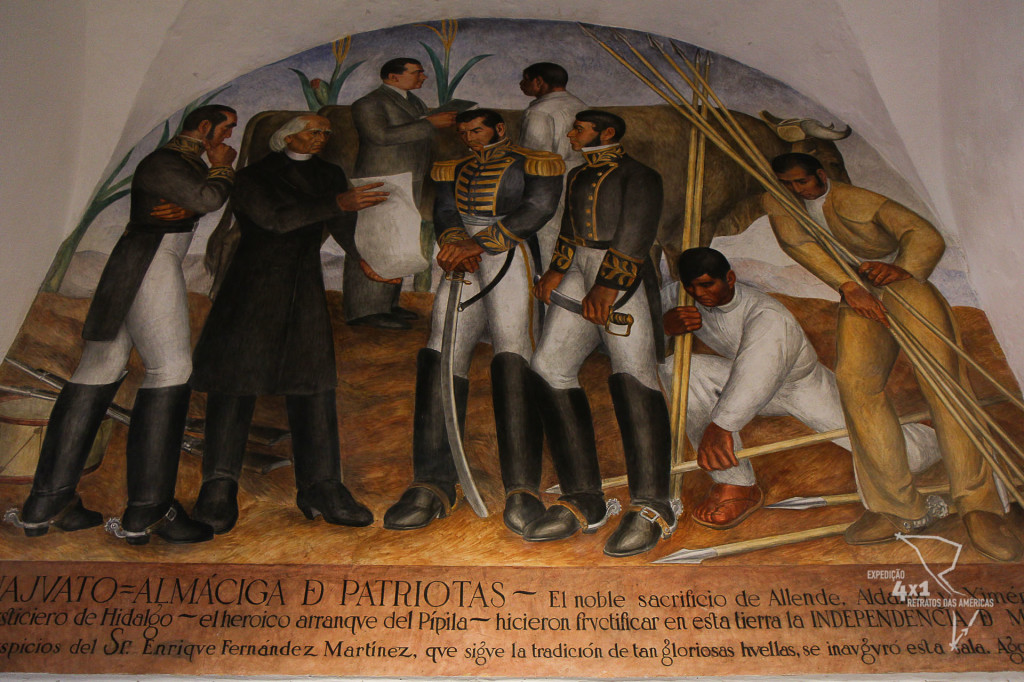
Mural in honor of Mexican Independence Patriots with Father Miguel Hidalgo and Ignacio Allende, na School of Fine Arts – San Miguel de Allende, Mexico
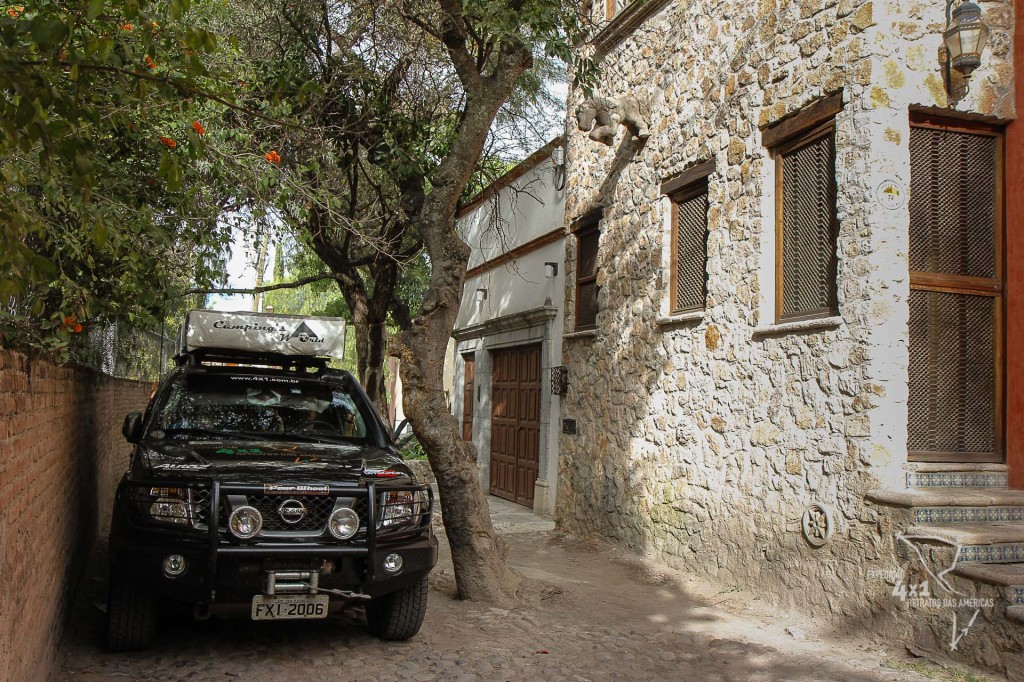
Tanajura going on “street” closer today in Shipping! He even had to collect the ears! hahaha (em San Miguel de Allende, Mexico)
Who wants to see more photos from this amazing passage, click here.




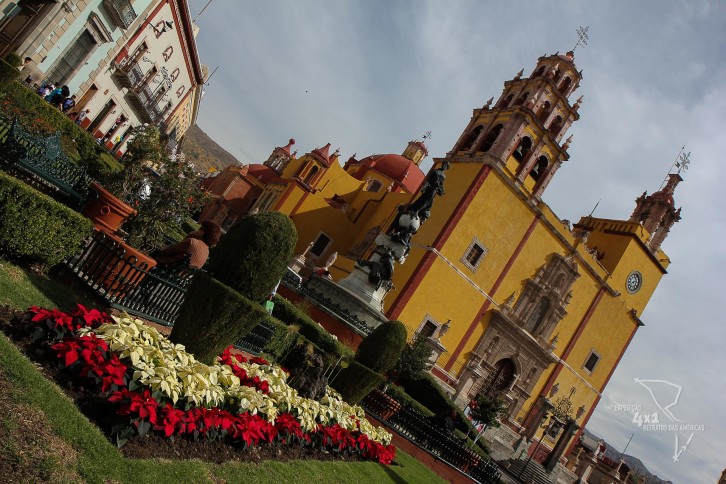
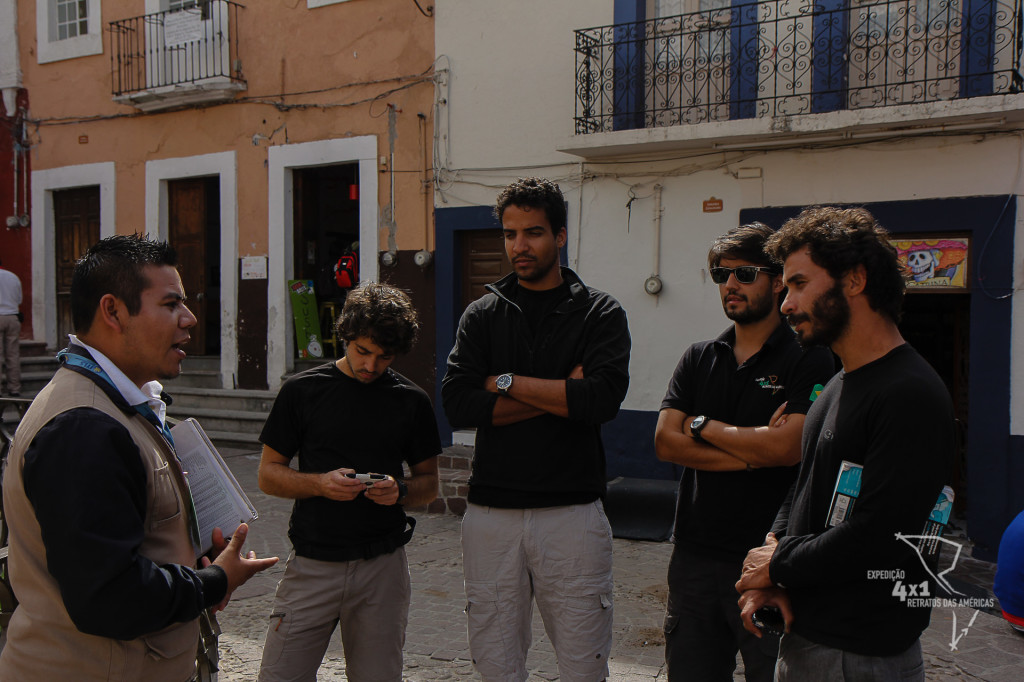
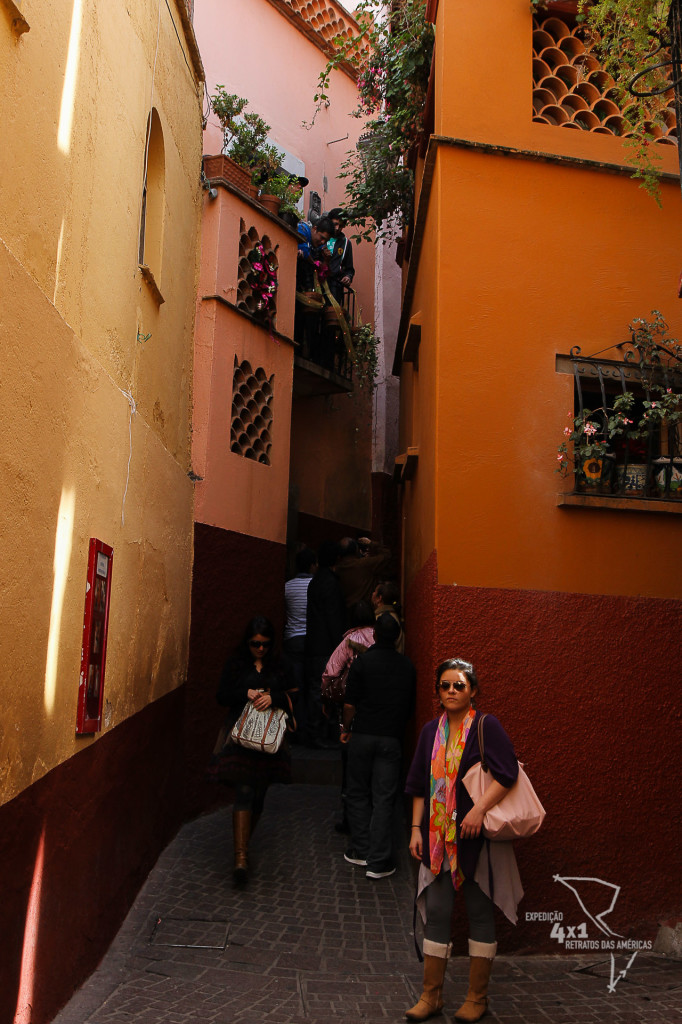
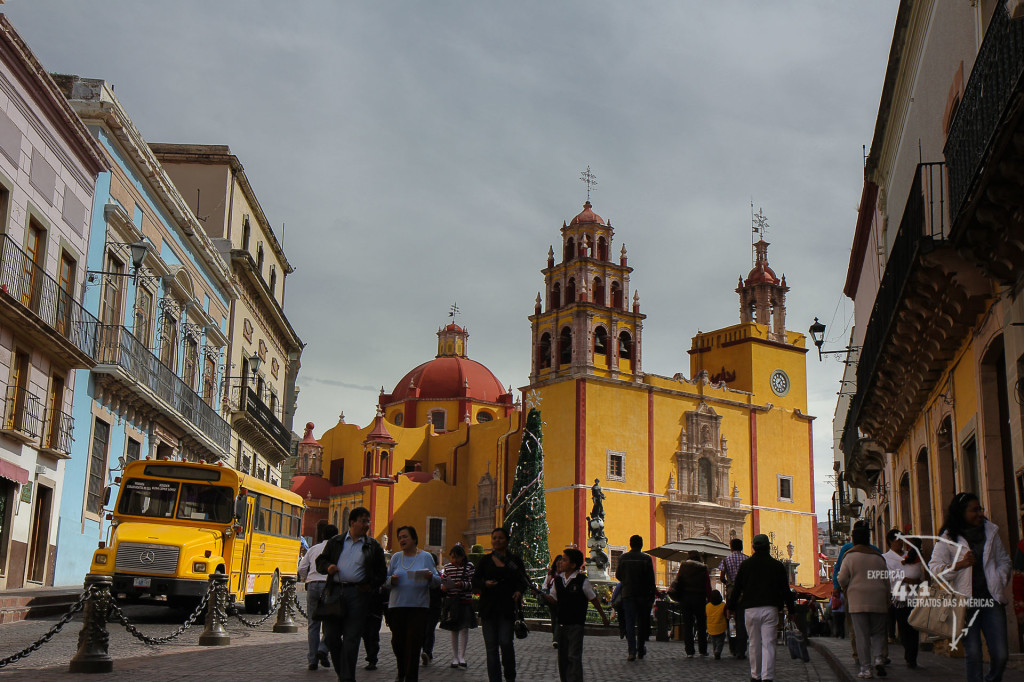
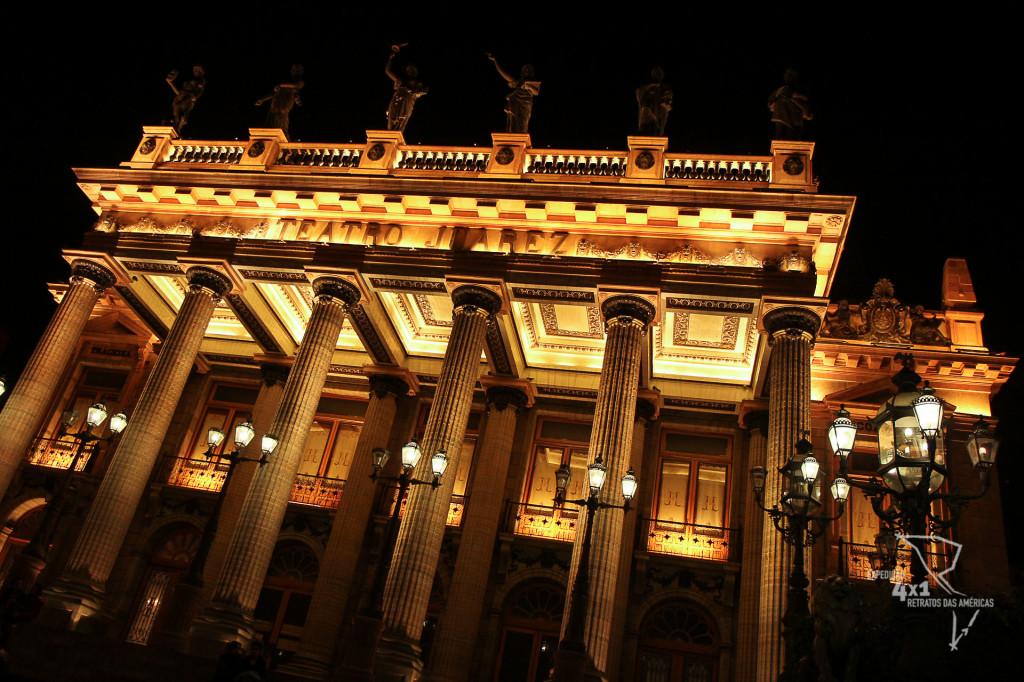
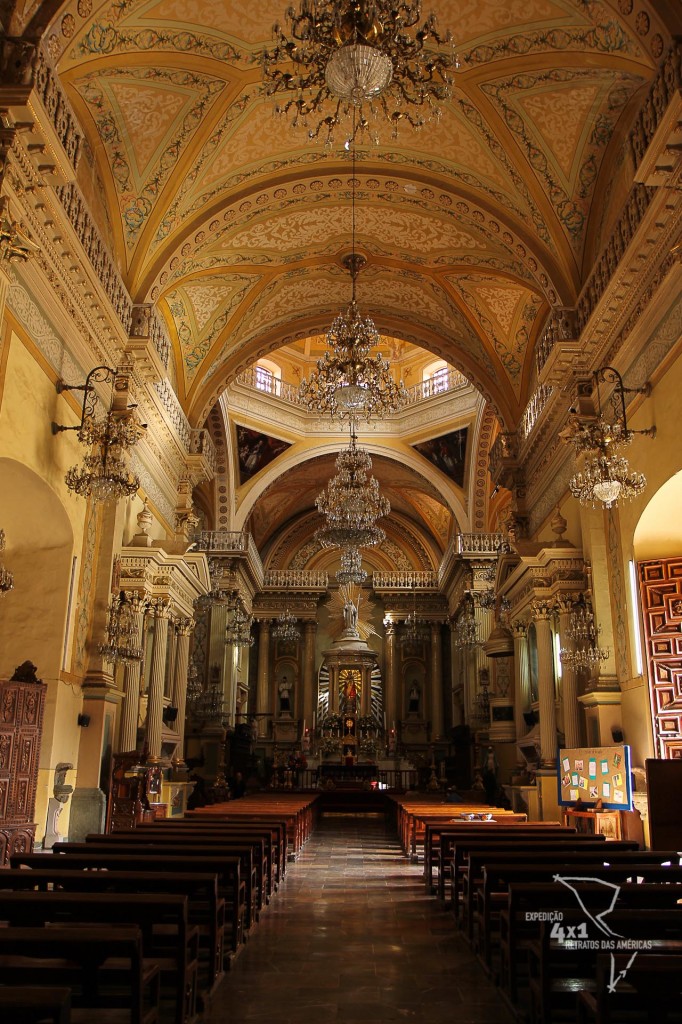
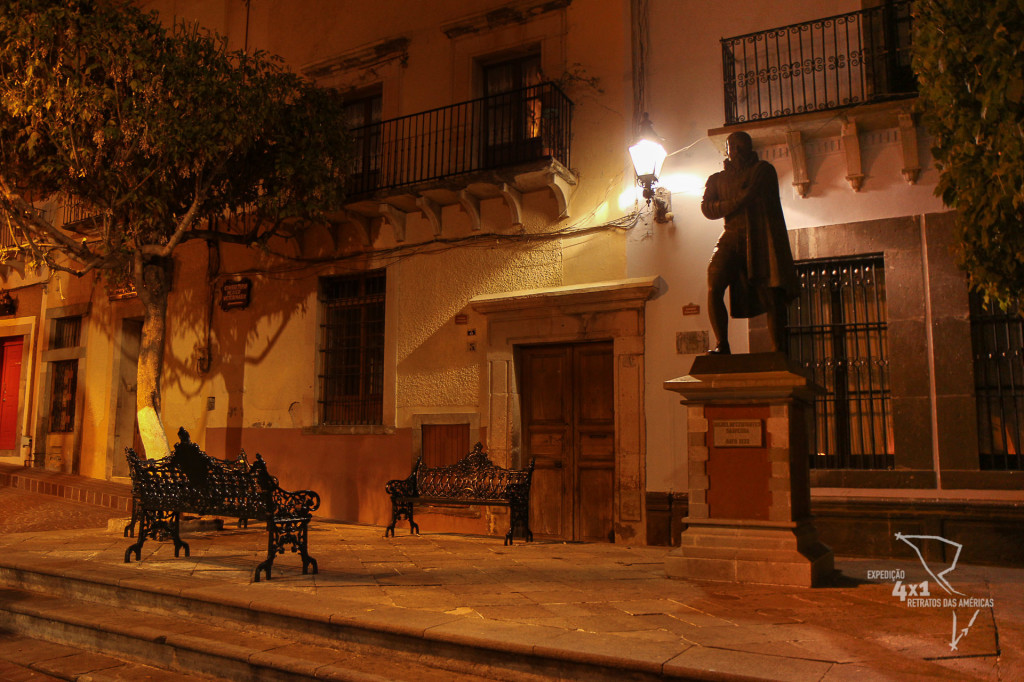
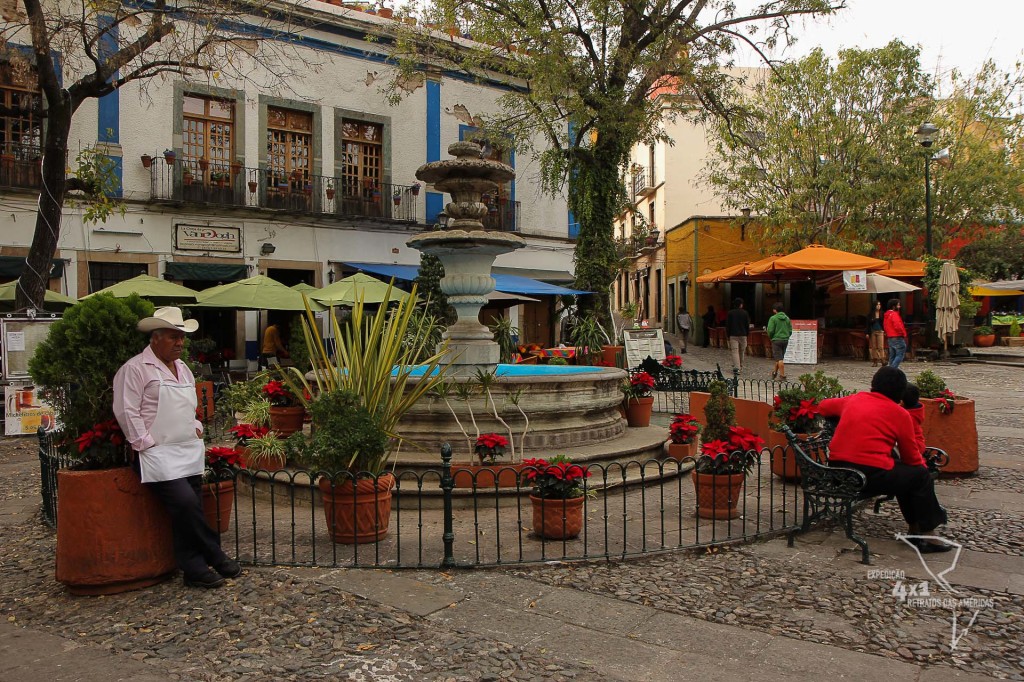
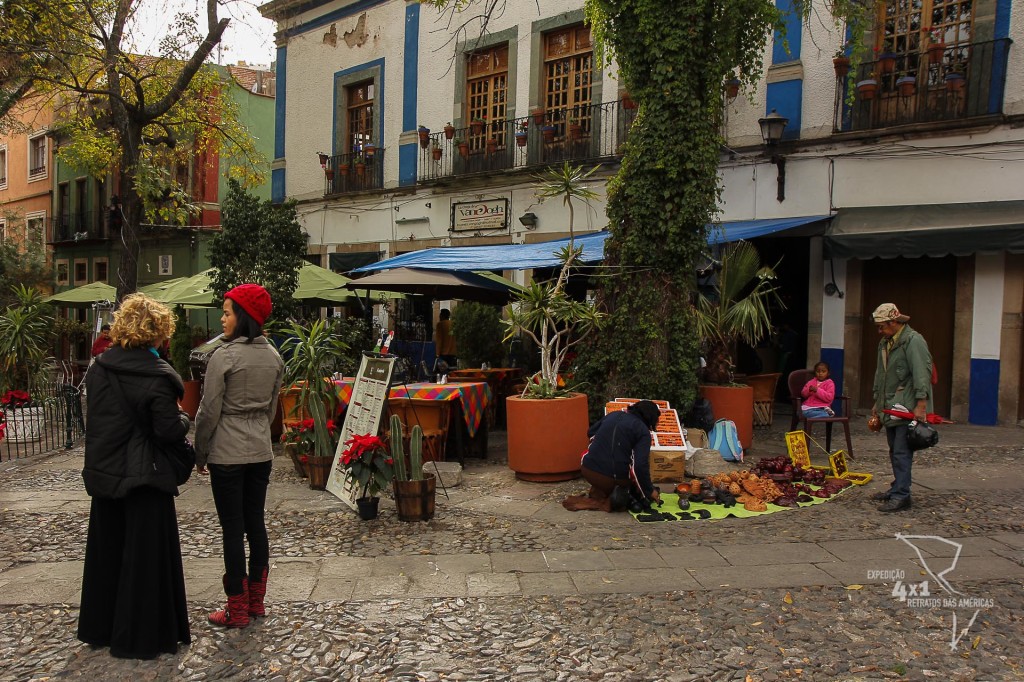
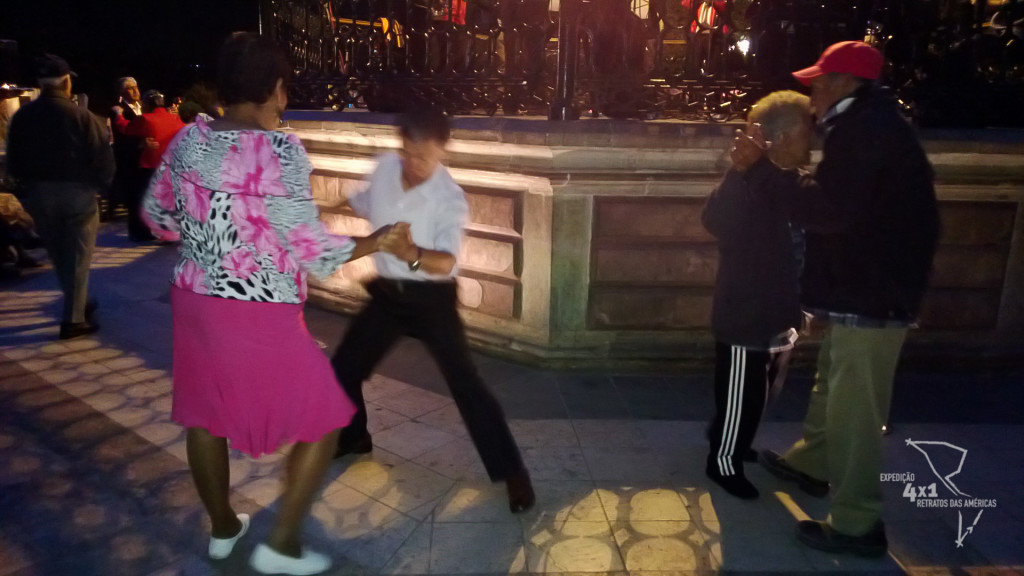

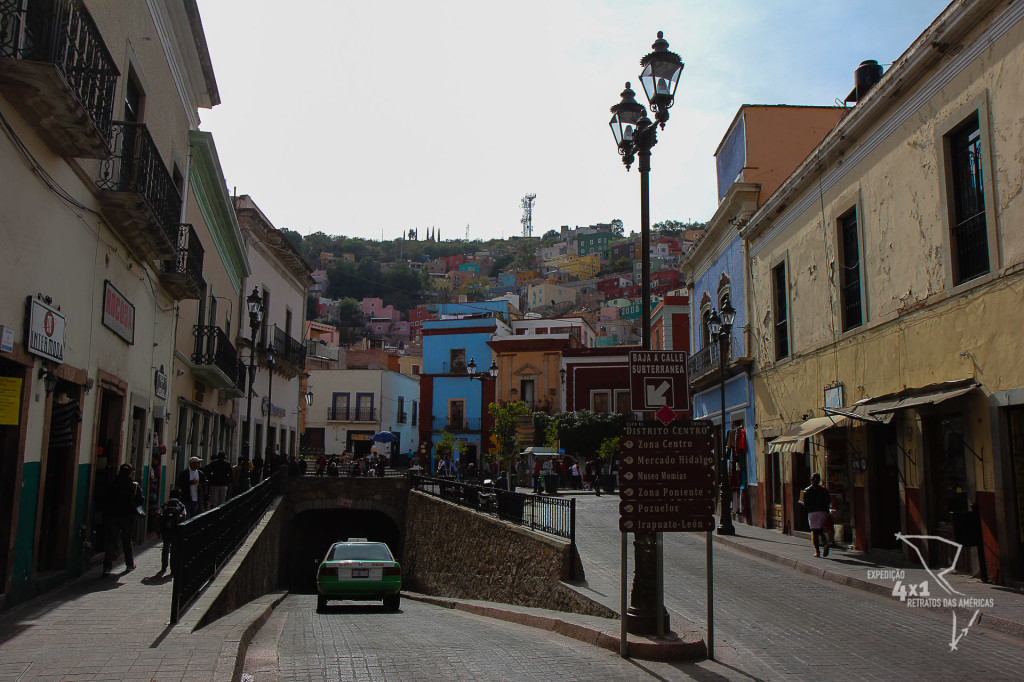
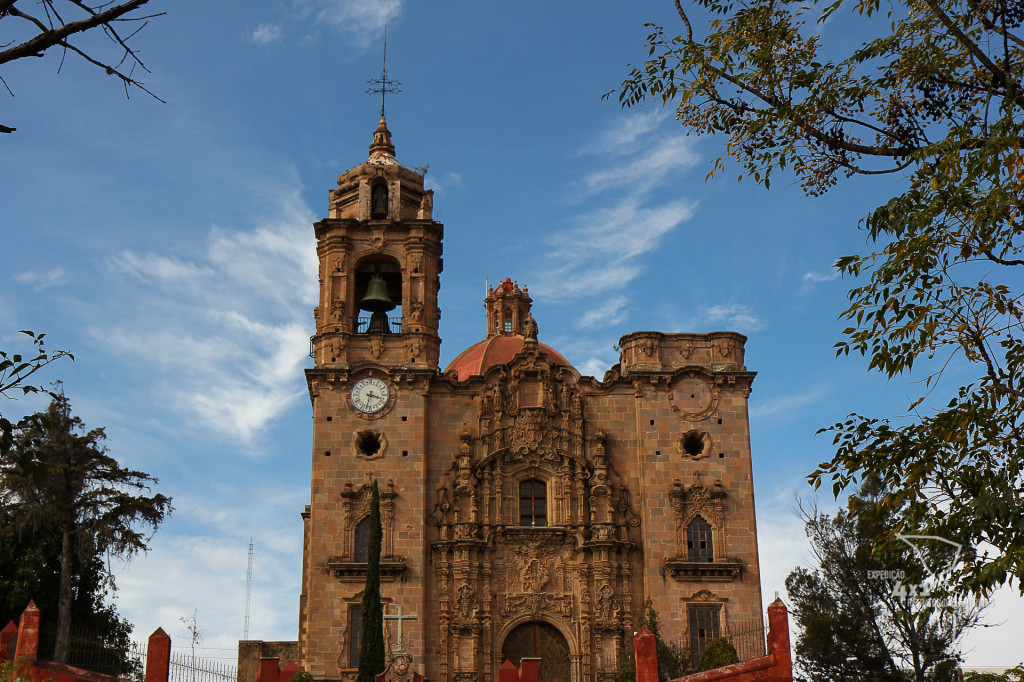
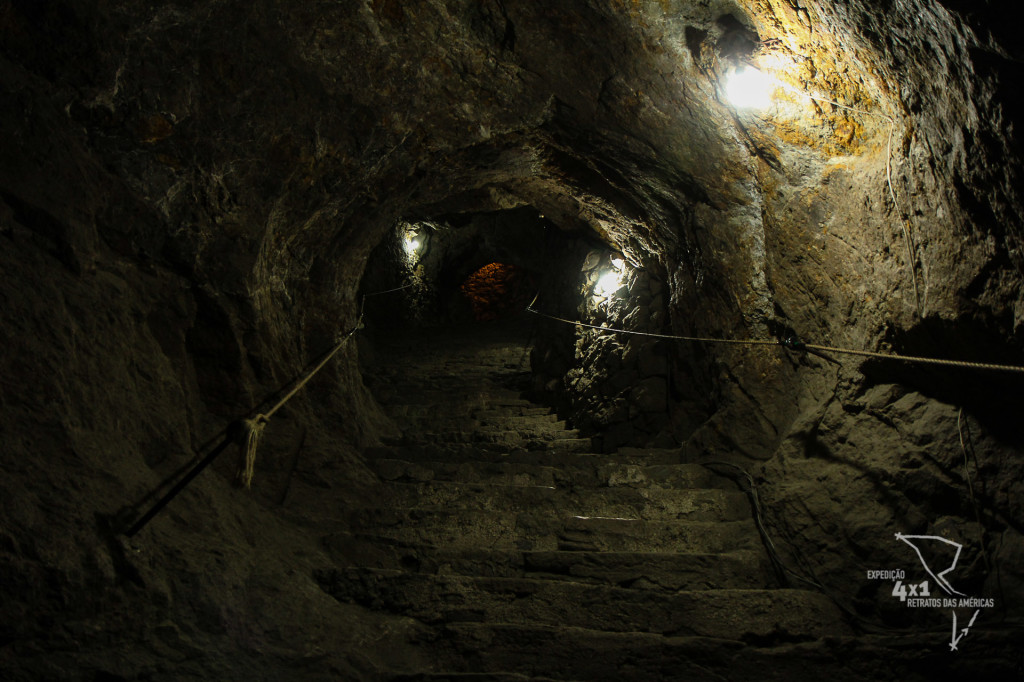
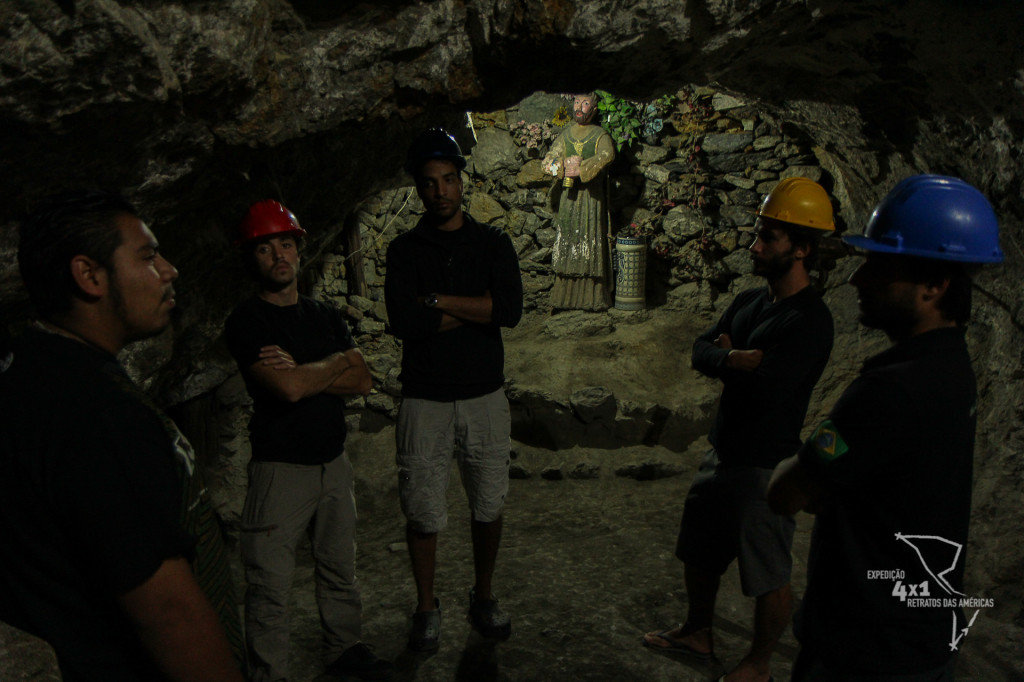
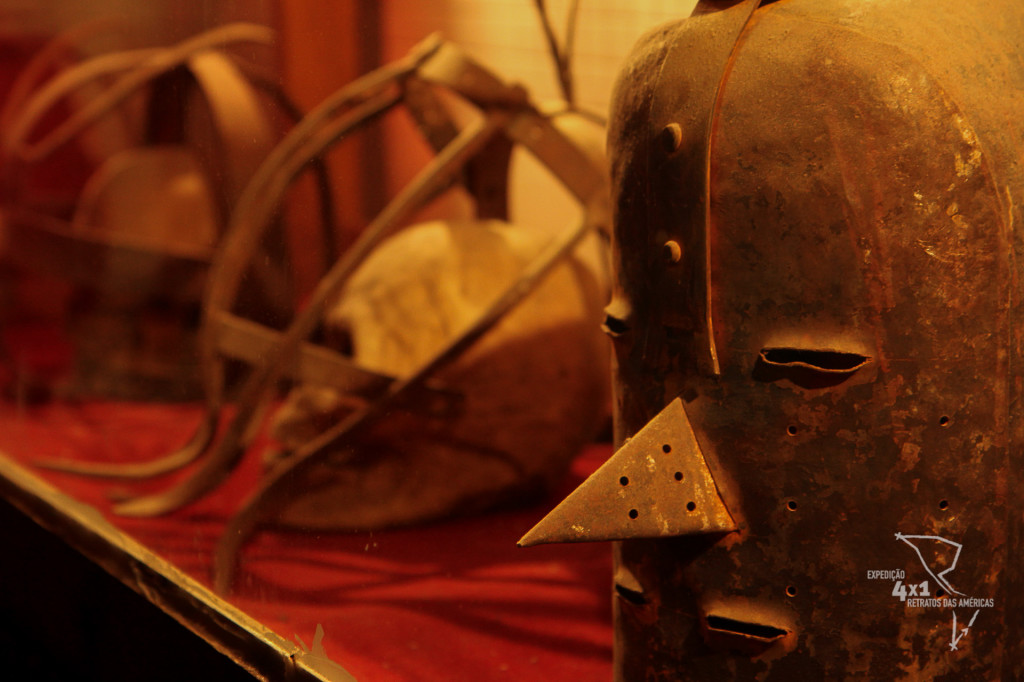
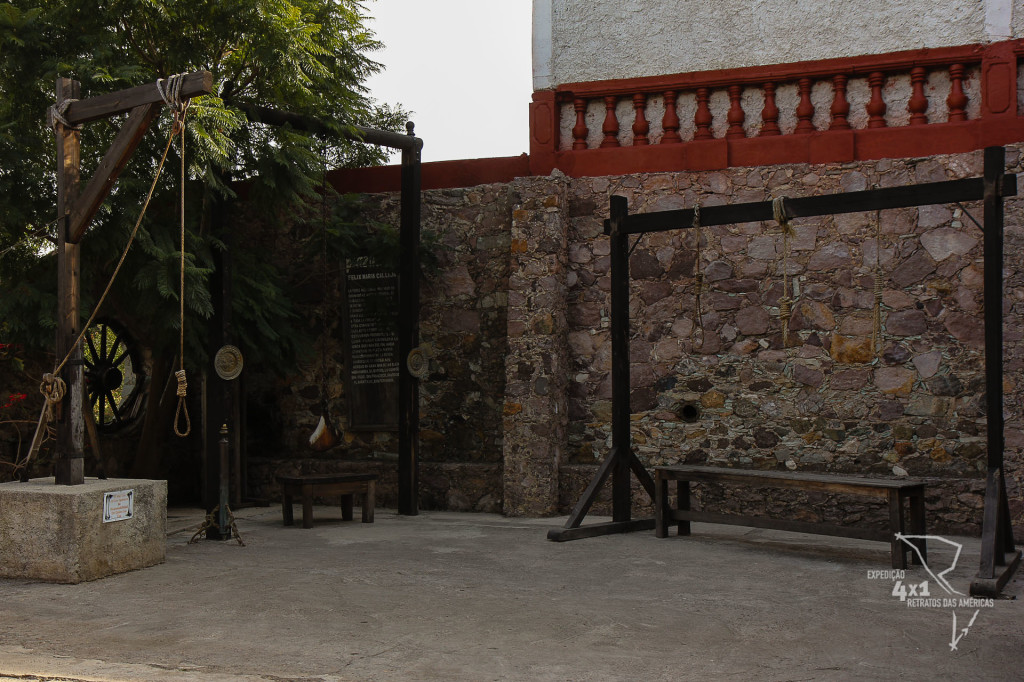
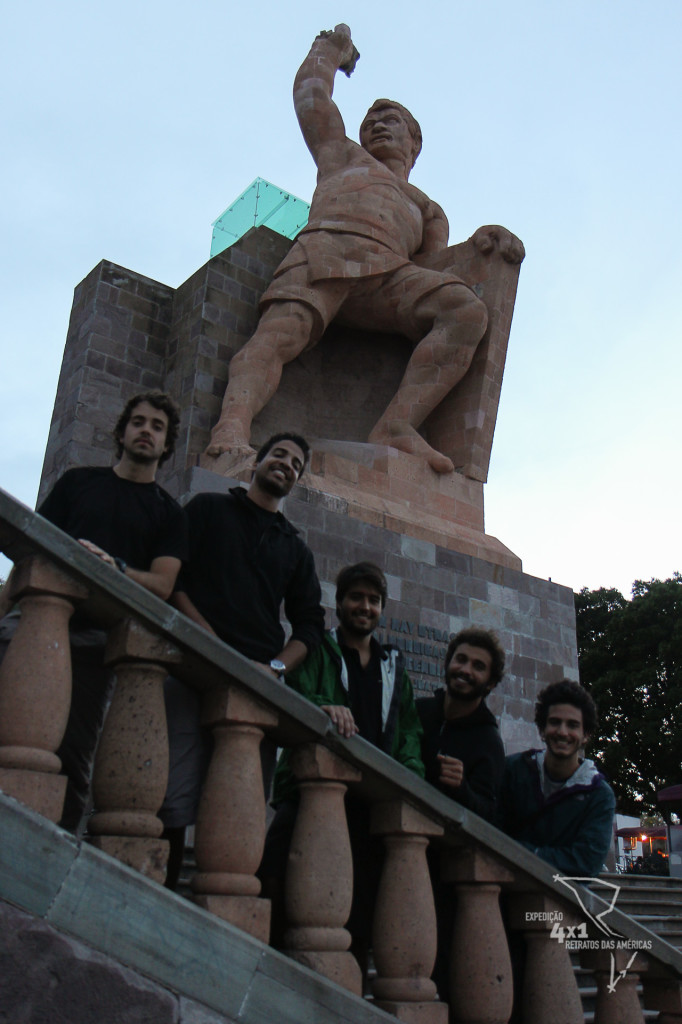

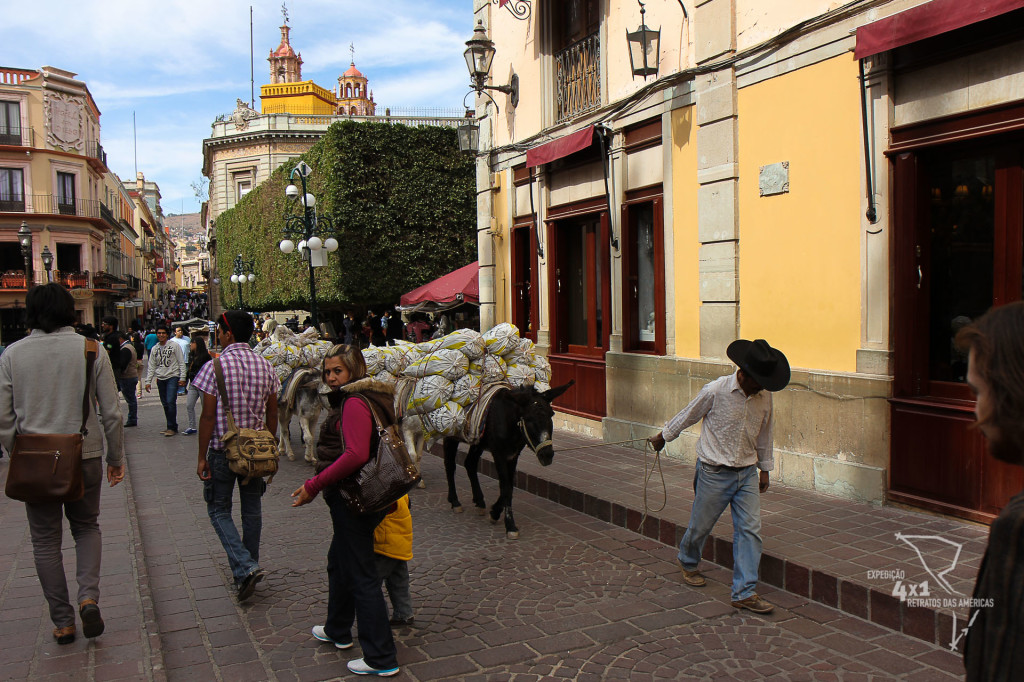

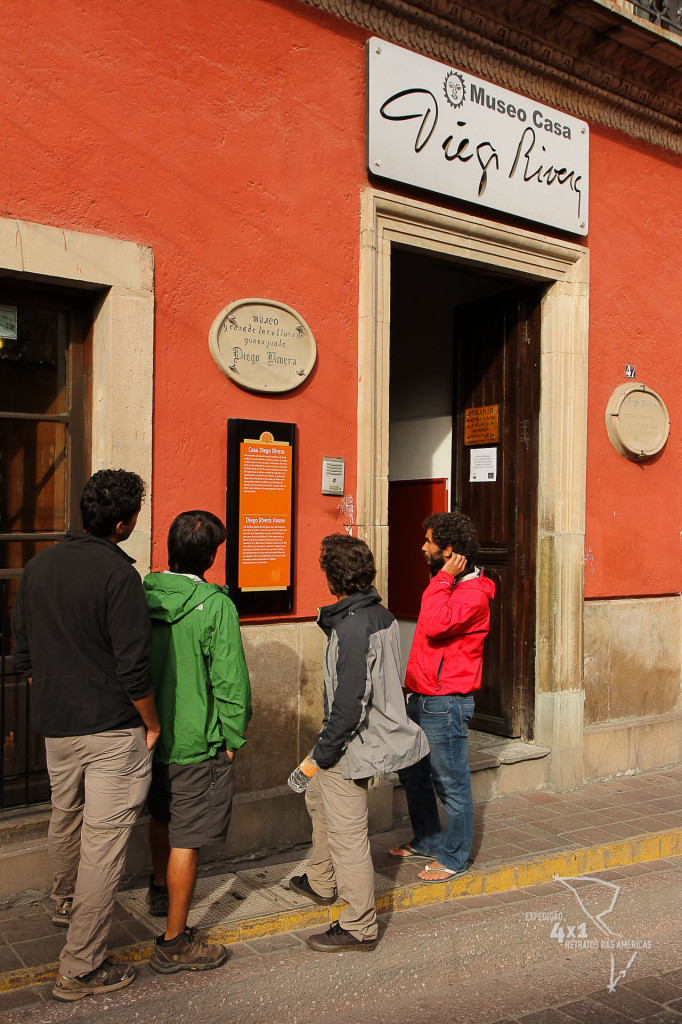
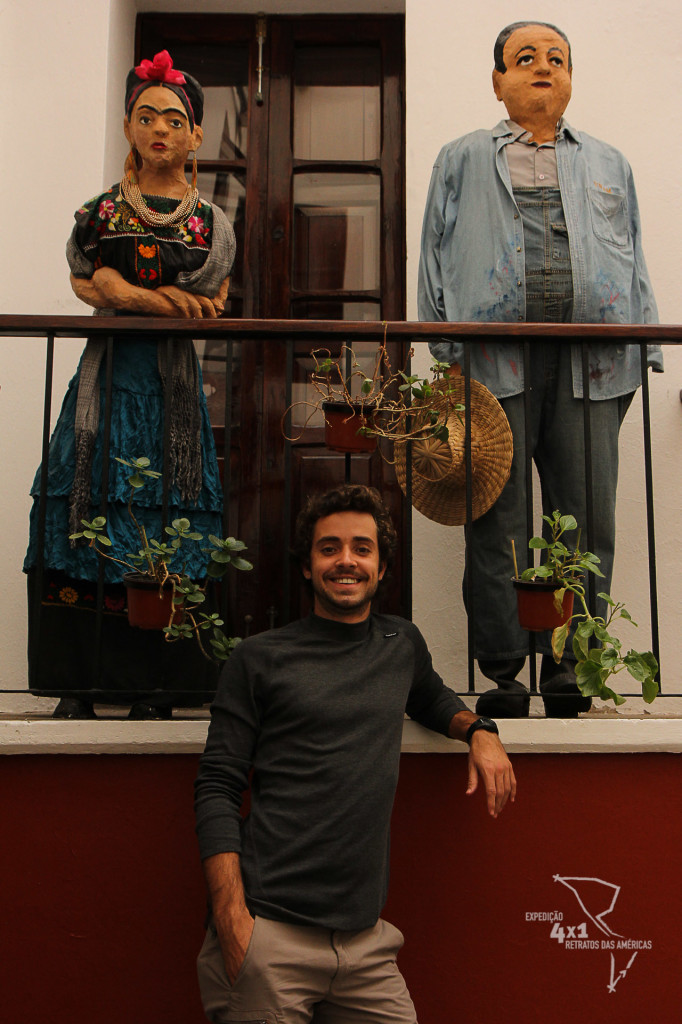
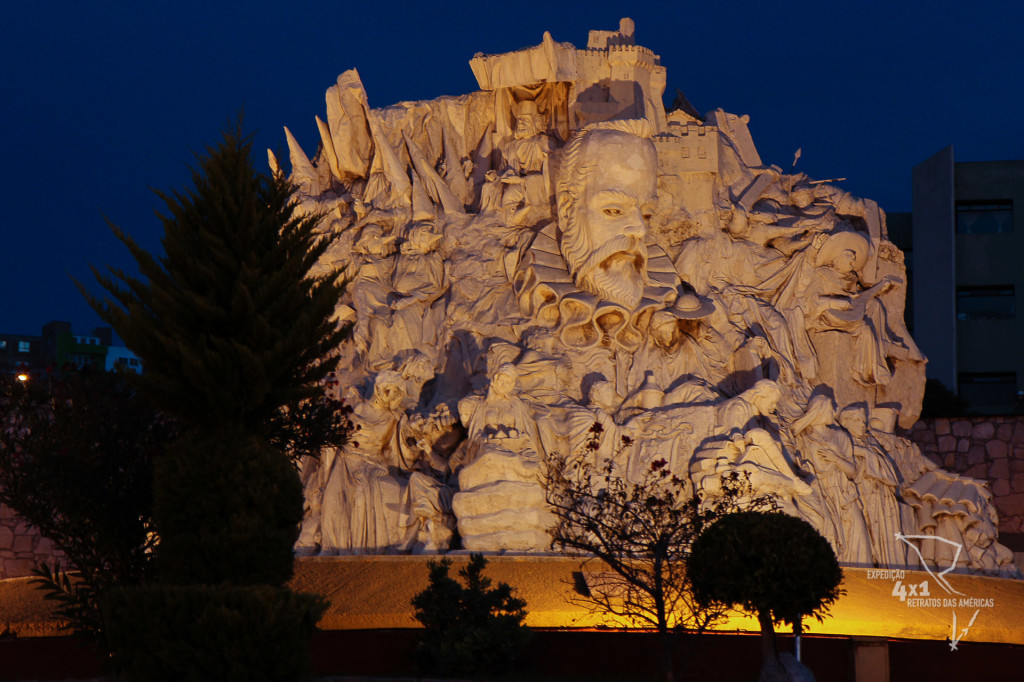
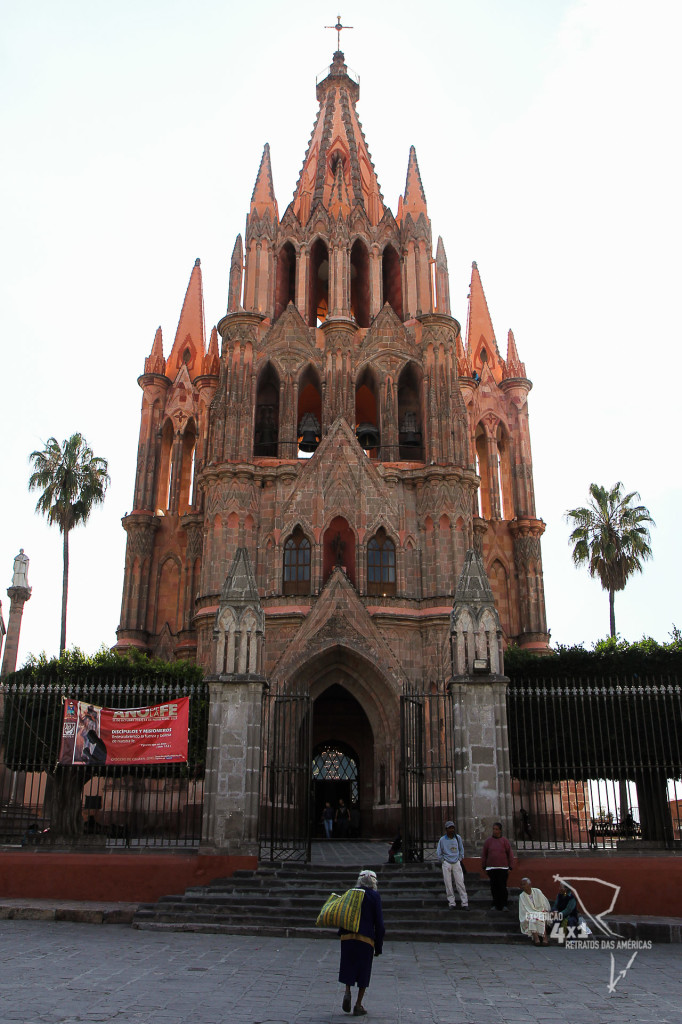




5 Comments
Our!!! How much culture and tradition!
It is wonderful to receive such reports that allow us to know the history and culture of other countries.
Guanajuato is really a very interesting place!
We could use the hint “marking the post”to guide people in the floods of São Paulo.
GOOD TRIP !!!
bjs
It is fascinating to hear stories, traditions and customs ingrained in every corner of this world. Things so close to us that we do not have the knowledge or the history books. All this enriches this amazing journey you are making. I think you should write a book. A hug to everyone!
Sure, Rogerio! This is one of the key drivers of our trip! Estamo maturing the idea of the book, think fondly of it! Big hug!
“but we do not follow the tradition” was great lol
That post enjoyable to read! =)
Bjs
hahaha this tradition has not given to us to follow, né Lu?
Thanks for the comment! Glad!
XOXO!